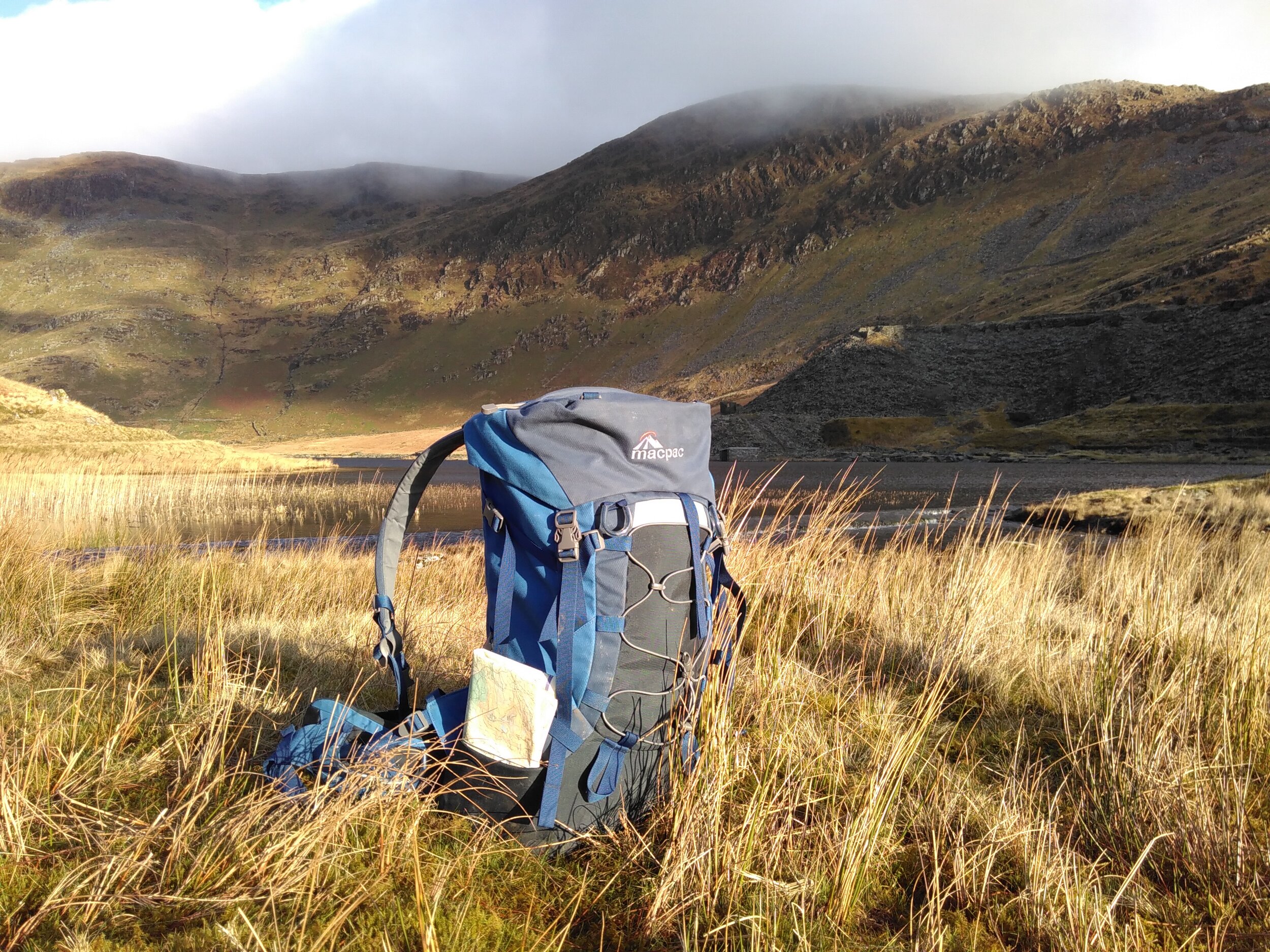Walk Challenge Training
Stephen Barker has been a Mountain Leader since 2006 and has led more challenge walks than he can remember, including Yorkshire 3 Peaks, National Three Peaks, English 3000s and Welsh 3000s.
Here are his tips on physically preparing for a walking challenge…
Remember: all, some or none of this may apply to you. I can only base my opinion on what works for me, and what I’ve seen work (or not work) for the hundreds of people I’ve guided. Reading an article is no substitute for good training, and no training programme should be undertaken unless you’re well enough to do so. Consult your GP first if in any doubt. Willpower is required - see our previous article on setting goals if you need a little inspiration.
Tip 1: Understand the task at hand.
I once had a client quit a National 3 Peaks Challenge at the foot of the first peak. Why?
They’d signed up for the event in good faith and good time. A training programme and challenge itinerary had been sent to them months in advance. The height of Ben Nevis is not a secret, it’s public knowledge. The top is 1,344m above sea level according to the map. The start is 30m above sea level. That’s 1,314m of climbing, and one moment of clarity that the aspirant summiteer should have before striking out, and preferably from the comfort of your living room, not on the mountain.
Knowing what you’ve got to do is the first step in preparing to do it. Whichever challenge walk you’ve booked with Large Outdoors, please feel free to get in touch with us if you have any questions about it. No question is a silly one!
Tip 2: Walking over hills...
...at speed is the best way to prepare for a hillwalking challenge. Everything helps, but never forget the primacy of walking over hills, at speed.
When it comes to physical training of any kind it’s easy to stay in your comfort zone and stick with what you do best. I’m guilty of this myself – running and walking extensively, while neglecting my upper body strength, all the time thinking I must get around to devising a weight programme and stick to it. But then I don’t enter weightlifting contests.
A walking challenge requires muscle endurance, not muscle power. Aim to train regularly, once a week minimum, and gradually increase the length and intensity of your walks. Speed is not as important as consistency. A pace equivalent to climbing a flight of domestic stairs in 20 seconds (time yourself, I doubt you take even 10 seconds) is sufficient to summit Ben Nevis in 3 hours. So you needn’t bust a gut, but 1,314 metres is a lot of stairs!
Train in as similar an environment to the challenge location as possible. If you don’t live close to the hills then think creatively: for years, French Alpinists have been using the boulders in the Forest of Fontainbleu to prepare for long alpine climbs, stringing short, difficult climbs together to mimic the physical demands of a long climb without ever climbing more than a few metres above the ground. If you’ve just one hill nearby, climb it a number of times. Covent Garden Tube Station has 193 steps. Box Hill is but a 50 minute train ride from Central London. Yes, repetition is boring, but boredom is a mental response; stay focussed, and it will make you fitter.
If the gym is the most convenient way for you to train, then Nordic Track, Step Master and standard running machines with an incline setting will help. Exercises and machines targeting the adductor and abductor muscles around the groin and hip (which close and open the legs) will improve your climbing and help prevent the all-too-common ‘groin strain’ and aching hips which come from stepping upwards and outwards. Alas, while these exercises may improve your strength and aerobic fitness for walking uphill, it’s difficult to simulate a long, uneven descent in the gym. Leg extensions will strengthen the knees and quadriceps, but won’t provide the varied stimuli of a real descent, which will target the small, stabilising muscles of the knee, ankle and hip joints. Perhaps most importantly, the gym cannot give you the same feeling of complete commitment that comes with climbing a mountain; it’s easier to step off the running machine than it is to get off of a mountain, so endeavour to hit the hills as often as you can. Walking distances over varied, steep terrain will strengthen your key muscle groups while helping to build your confidence in the hills.
Tip 3: Eat well and enjoy what you eat.
I’m often asked “How many calories will I burn doing this challenge?”
Despite being impossible to answer, this always sets alarm bells ringing for me. Hill-walking has many health benefits, but do not use a challenge walk solely as a means to lose weight. To get the best from yourself you must fuel your body appropriately before, during and after your walk. Good nutrition will allay the draining effects of intense physical activity and sleep deprivation.
Eat a substantial breakfast beforehand - there’s an appreciable difference between the person who eats just a banana for breakfast and the person who eats a banana chopped on to cereal with two slices of toast, a glass of juice and a cup of tea. Likewise, on the hill, keep yourself fuelled up with whatever complex carbohydrates you enjoy. My pockets are usually stuffed with malt loaf, Pains au Chocolat and rice pudding – but each to their own. Flapjacks, trail mix, sandwiches, pasta – whatever you enjoy. Don’t make the task harder by limiting yourself to unappetising foodstuffs that promise energy boosts or improved performance, they’re usually just sugar masquerading as science. The ‘right thing’ is the thing you actually want to eat, so indulge yourself. Use your training walks to find out what you enjoy eating on the hill.
Tip 4: Know your boots.
Make sure your boots are ‘broken in’, i.e. previously worn by you on a number of decent walks.
Break them in or they may break you. No other piece of kit has the same potential to ruin your challenge. Your water-proofs do their job straight off the peg, but you have to physically acquaint your feet with your boots. Wear them to work if you have to. Wear them round the house, whatever it takes to get your feet to make friends with them.
Tip 5: Wear your rucksack properly.
See your rucksack as a bum bag with shoulder straps to keep it upright. Use the waist strap to ensure the weight sits on your hips, not on your shoulders. You should be able to remove the shoulder straps and still carry the load.
A properly fitted rucksack: weight sat on the waist, shoulder straps un-laden. Use the shoulder straps to keep the sack upright.
Too much weight on the shoulders will unbalance you and make you lean forward, reducing your lung capacity and lowering your performance. If you regularly suffer neck and shoulder pain after carrying your rucksack, chances are you have been wearing it wrong.
Tip 6: Think, train and succeed collectively.
It’s most likely you’ll be undertaking the challenge as part of a group, and it’s no coincidence that groups that train together succeed more often than those that don’t. Turning up on the day of the challenge, hoping to wing it - while alright for some - results in failure for most and frustration for those who have prepared properly. So do your training, because others might be depending on you.
If you’re entering an event with friends or co-workers then you’re half way there: understanding your co-challengers’ strengths and weaknesses beforehand will spare you a frustrating time on the hill. Knowing the pace you need to walk at is important, but ultimately your team-mates are your gauge. You cannot move faster than your slowest group member, so try to synchronise with them at a pace that’s comfortable for all. Don’t wait until challenge day to find out you’re all at different levels, by then it’s too late.
Heed these tips and you’ll train smarter and avoid the most common pitfalls in challenge walking.
See you on the hills!


